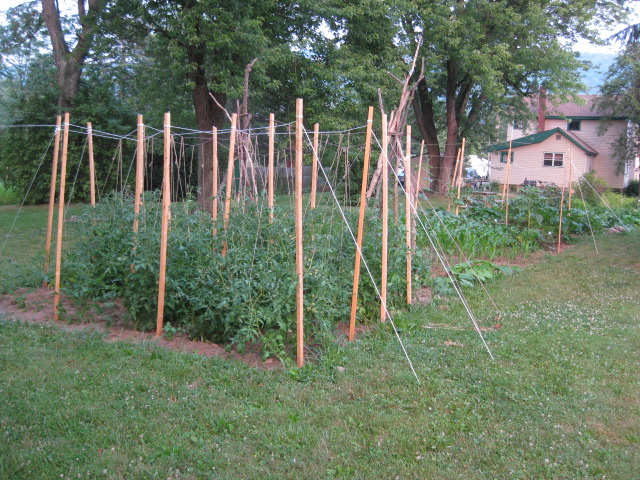-

Erin Donahue -

Christina Barkanic -

Brittany Trott -

Emily Wiley -

Jessica Reilley -

Chris Raines -

Will Nichols -

Emily Reddy -

Michele Marchetti -

Michele Frank -

James Gherardi -

Kit Henshaw -

Christina and Erin -

Kim Tait -

Erin McKinney -

Steve Spanelli -

Sam Komlenic -

Katherine Taylor Grofic -

James Eisenstein -

Jamie Oberdick -

Anna Lombardo -

LacCreta Holland -

Tony Ricci -

Local Food Journey -

Laura Young -

Kristin Camplese -

Harrison's Fresh + Local -

Danielle Matalonis -

Kristine A. -

Linda Weaver -

Naomi Elle Schwartz -

Dana Stuchul -

Cara McShane -

Brittany Smith -

Jessica Illuzzi - Frosty
-

Jessica Paholsky -

James Sechrengost -

Brad Yeckley -

Maya Althouse -

Jordan Reabold -

Kim Chase -

Maria Bryant - Alexandrea Scott
Tips to gardening on the cheap
Posted by Jamie Oberdick on 05/31, 2016 at 10:11 AM

About 10 years ago, one of the most ridiculous books ever published on gardening, The $64 Tomato, hit the bookstores. Basically, it was a tale that was less about gardening and more about how bad of a gardener its author, William Alexander, was at that time (no idea if he got any better).
While much of the book was written in jest, soon afterwards I’d hear people refer to it as a cautionary tale that gardening is a super-expensive endeavor. However, this couldn’t be further from the truth; gardening doesn’t have to be expensive (no, Mr. Alexander, spending $700 and $1900 for steel edging is not a necessity for growing tomatoes). With a little bit of know-how, the desire to recycle, and modest effort, you can grow a garden without breaking your bank. Here’s some tips:
- Borrow from friends: Want to start a garden from scratch but don’t have a tiller? Instead of dropping hundreds of dollars on a tiller, ask around! Your friends, family, or coworkers may already have one. If not, check equipment rental places; they may have a tiller for you to rent, as opposed to buying.
- Buy seeds, not plants: While it’s easier to buy plants, it’s much cheaper to buy seeds. There are other advantages to this as well; you get more variety in seeds, and some varieties you can’t buy as plants because they don’t transplant well. Plus, there seems to be this aversion to planting seeds because growing something from seeds seems to be tantamount to scaling Everest, based on what I hear from some people. Not true! Many types of plants are quite easy to grow from seed.
- Use homemade plant supports: Trellises, tomato cages, etc. all can add up to a pricey trip to your local garden center. However, you can make many supports. You can find 2x2 furring strips at Lowe’s/Home Depot for about $2 a piece, much cheaper than the supports they sell in the garden center. Furring strips combined with dollar store clothesline can be used to create a Florida weave for tomato supports that can support multiple plants. You can also use furring strips and twine to make your own trellis for cucumbers and other vine plants.
- Save seeds: If you grow open-pollinated or heirloom varieties that are not hybrids, you can save seeds. It’s pretty easy, and you can find information on how to properly do it online for most varieties. There are challenges for some vegetables such as cross-pollination.
- Free fertilizer: Buying fertilizer/garden soil can really add up. Once you have your garden established, it still needs the soil to be replenished each year. However, you can have a healthy garden with great soil for free by using your own compost. Create a compost pile in a corner of your yard, and by turning it and adding to it, you can have all the compost you need. Also, it’s a good idea to dump your grass clippings into the garden. Along with being a mulch that prevents weeds, the grass breaks down and feeds future garden plants.
![]() Author: Jamie Oberdick
Author: Jamie Oberdick
Bio: Editor, Local Food Journey | Passionate about supporting local food in Central PA
- Our Local Food Journey comes to an end
- Winter isn’t a quiet time at the farm
- Get the taste of garden season right now by growing herbs indoors
- All you need to know about PASA’s Farming for the Future conference









NO COMMENTS